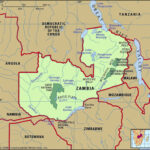With many across the nation benefiting from oceans, lakes, and rivers, it’s an opportune moment to consider the crucial topic of clean water. Let’s delve into the origins of our water and explore how each of us can contribute to maintaining its purity. Understanding Where Does Water Come From is the first step in appreciating and protecting this vital resource.
The Journey of Our Drinking Water
Have you ever wondered where does water come from that flows from your tap? Our drinking water primarily originates from two natural sources: surface water and groundwater. Surface water encompasses bodies of water visible on the Earth’s surface, such as rivers, lakes, and reservoirs. Groundwater, conversely, is located beneath the surface, residing in aquifers, which are permeable rocks and sediments that hold water. Both sources play a critical role in supplying our homes and communities with the water we need every day.
To ensure the safety of public drinking water systems across the United States, the Safe Drinking Water Act (SDWA) was established by Congress in 1974. Administered by the U.S. Environmental Protection Agency (EPA), the SDWA sets national standards to protect drinking water from both naturally occurring and man-made contaminants. This act has been updated to strengthen safeguards for our water sources, including the lakes, rivers, springs, reservoirs, and groundwater wells that feed into public systems. It’s important to note that the SDWA’s regulations specifically apply to public water systems and do not extend to private wells.
From Source to Tap: The Water Treatment Process
Once we understand where does water come from, the next question is how it becomes safe for consumption. Typically, water is drawn from intake points in surface water or groundwater sources and directed to a water treatment facility. From there, it travels through public water systems directly to our homes. This journey involves a comprehensive treatment process to remove potential contaminants and ensure the water meets stringent safety standards.
The Centers for Disease Control and Prevention (CDC) outlines a common four-step water treatment process implemented by community water systems to make tap water safe to drink:
1. Coagulation and Flocculation
The initial stage involves coagulation and flocculation. In this step, treatment facilities add chemicals to the raw water. These chemicals work to neutralize the charge of dissolved and suspended particles in the water, causing them to clump together. This clumping process forms larger, heavier particles known as floc.
2. Sedimentation
Next comes sedimentation. Due to their increased weight from the coagulation and flocculation process, the floc particles become heavy enough to settle out of the water. This sedimentation process occurs in large basins, allowing the floc to sink to the bottom, separating it from the clearer water above.
3. Filtration
After sedimentation, the clearer water from the top of the sedimentation basin moves to the filtration stage. Here, the water passes through filters composed of various materials like sand, gravel, and charcoal. These filters have different pore sizes designed to remove any remaining dissolved particles, including dust, parasites, bacteria, viruses, and chemicals that were not removed during the previous stages.
4. Disinfection
The final step is disinfection. Even after rigorous filtration, a disinfectant is often added to the water to eliminate any lingering parasites, bacteria, and viruses. Disinfection is crucial for ensuring that the water is safe to drink as it travels through pipes to homes and businesses, protecting it from potential contamination. Furthermore, to promote public health, many water systems also add fluoride to the water supply, a practice recommended by the CDC for preventing tooth decay.
Alt text: Water treatment process infographic illustrating four key steps: coagulation and flocculation using chemical addition, sedimentation showing floc settling, filtration through sand and gravel layers, and disinfection with added chemicals, ensuring safe drinking water from source to tap.
Protecting Our Water Quality
Understanding where does water come from and how it is treated highlights the importance of protecting our water sources. Every individual can play a part in maintaining water quality within their community. Simple actions around the home can significantly reduce water pollution. Correcting common household mistakes is a great starting point. Improper waste disposal, nutrient pollution from indoor and outdoor sources, storm drain runoff, and excessive use of fertilizers are all factors that can negatively impact water quality.
Resources are available to guide you in taking action. Organizations like the NEEF (National Environmental Education Foundation) offer valuable information, such as infographics on reducing water pollution and tips on protecting water quality at home. By being mindful of our daily habits and making informed choices, we can collectively contribute to safeguarding our precious water resources for generations to come.

